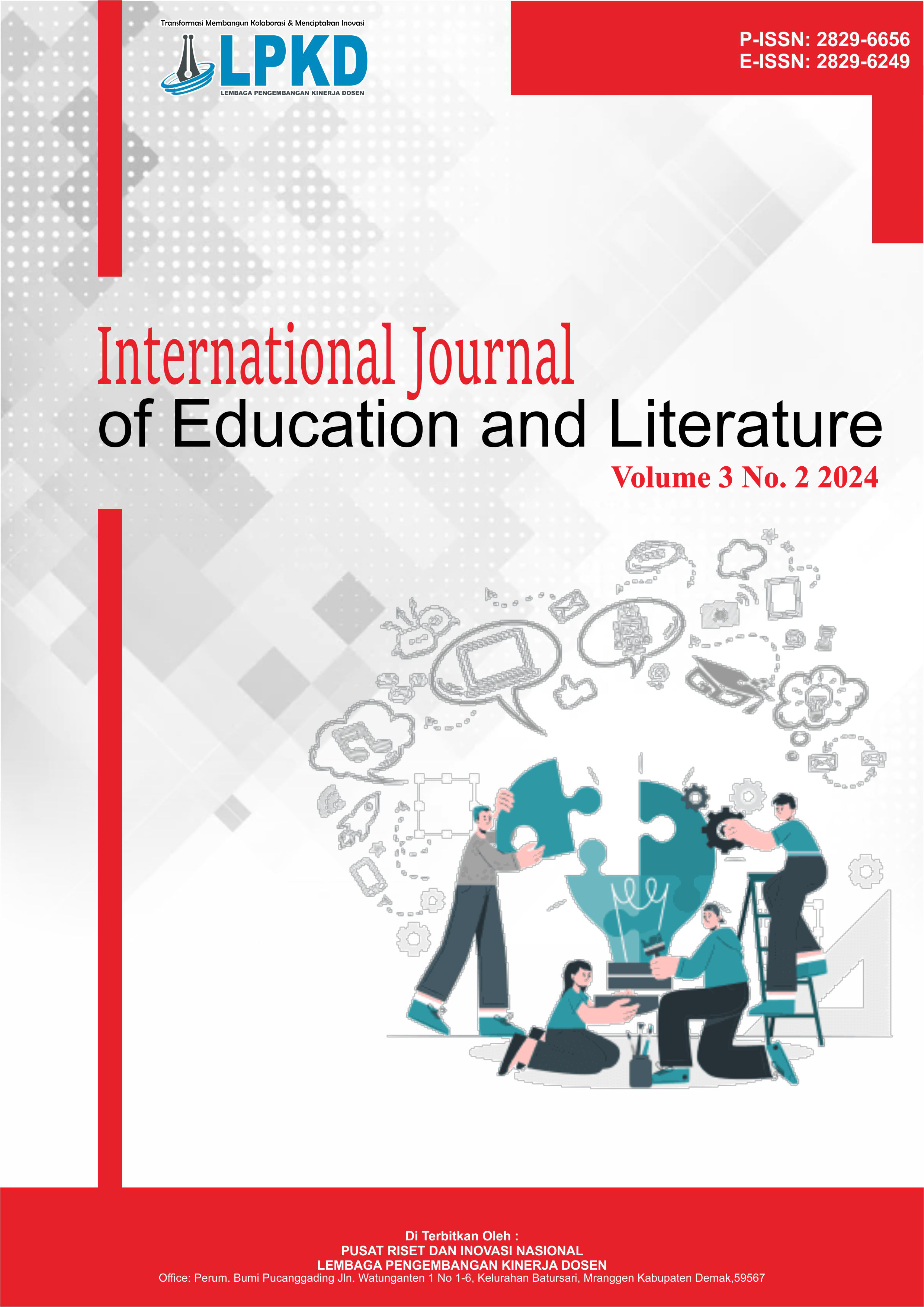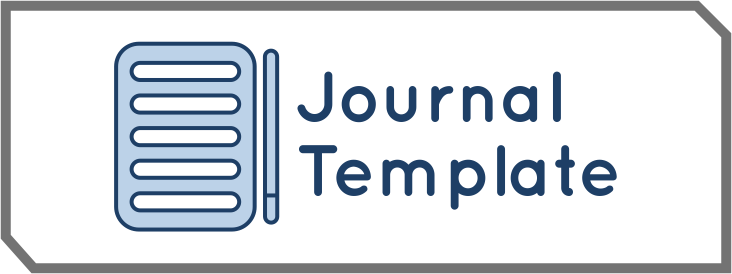The Evolution Of Japanese Haiku: From Paper To Digital
DOI:
https://doi.org/10.55606/ijel.v3i2.118Keywords:
Haiku, Digital literature, Japanese poemAbstract
Haiku is a type of traditional Japanese poetry that originated in the Muromachi era (13th-15th centuries) and evolved further throughout the Edo era (17th century). Haiku, along with Ninja, Manga, Samurai, and Karaoke, has become a prominent Japanese vocabulary word around the world. Haiku is a form of poetry that can be found in both Japanese and international literature. Haiku has grown in popularity as a result of technological advancements in the twenty-first century, particularly through the internet and social media. This study attempts to summarize the evolution of haiku from paper to digital media as it exists today. Digital platforms have changed the classic haiku structure by allowing for syllable count experimentation, multimedia incorporation, and worldwide cultural interaction. These innovations have enhanced the haiku tradition while preserving its core and depth.
References
Baetens, J., & Van Looy, J. (2008). E-poetry between image and performance: A cultural analysis. Journal of E-media Studies, 1(1), 1-18.
Barthes, R. (1985). Mitologi (N. Nurhadi & S. Millah, Trans.). Yogyakarta: Kreasi Wacana.
Bungin, B. (2020). Penelitian kualitatif. Jember: LPPM Universitas Negeri Jember.
Caleshu, A., Waterman, R., & Kemp, S. (2023). Poetry and COVID-19: The benefit of poetry and the poetryandcovidarchive.com website to mental health and wellbeing. Journal of Poetry Therapy, 1–21. https://doi.org/10.1080/08893675.2023.2250921
Creswell, J. W. (2019). Research design. New York: Routledge.
Dhona, H. R. (2020). Analisis wacana Foucault dalam studi komunikasi. Journal Communication Spectrum, 9(2), 189-208. http://dx.doi.org/10.36782/jcs.v9i1.2026
Di Rosario, G. (2011). Electronic poetry: Understanding poetry in the digital environment. Jyvaskyla: Publishing Unit of University Jyvaskyla.
Elo, S., & Kyngas, H. (2008). The qualitative content analysis process. Journal of Advanced Nursing, 62(1), 107-115. https://doi.org/10.1111/j.1365-2648.2007.04569.x
Eriyanto. (2001). Analisis wacana: Pengantar analisis teks media. Yogyakarta: LKIS.
Fitriyani, S. S., & Sumiyadi, S. (2020). Puisi bergaya haiku dalam cyber sastra Indonesia di era milenial (2018-2019). Jurnal Bahtera Sastra Indonesia, 3(1).
Foucault, M. (2004). The archaeology of knowledge. New York: Routledge.
Foucault, M., Lotringer, S., & Hochhroth, L. (1996). Foucault live (Interviews 1961-1984). Semiotext(e).
Hamid, M. N. S., Hassan, A. A., & Munir, S. M. B. (2022). Puisi sebagai alat revolusioner: Analisis tekstual puisi-puisi perjuangan Patani dalam internet. RENTAS: Jurnal Bahasa, Sastera dan Budaya, 1(1), 85-115.
Hayles, N. K. (2007). Electronic literature: What is it. In Doing digital humanities: Practice, training, research (pp. 197-226).
Heryana, A. (2018). Informan dan pemilihan informan pada penelitian kualitatif. Retrieved October 25, 2020, from http://adeheryana.weblog.esaunggul.ac.id/wp-content/uploads/sites/5665/2018/12/Ade-Heryana_Informan-dan-Pemilihan-Informan.pdf
Higginson, W. J., & Harter, P. (1989). Beyond haiku. In The haiku handbook: How to write, share, and teach haiku (pp. [specific page numbers if available]). Tokyo–New York–London.
Itouen. (2023). Shinhaiku daisho towa. Retrieved August 20, 2023, from https://itoen-shinhaiku.jp/about/
Kaneko, T., & Shohei, Y. (2022). Korona-ka no wadai arawasu haiku umu. In Proceeding: 16th Technical Data and Information Management Forum.
Mandah, D., et al. (1992). Pengantar kesusastraan Jepang. Jakarta: Grasindo.
Meilantari, N. L. G., & Ayuba, S. R. (2021, June). Wacana pandemi pada haiku-haiku pemenang kontes di Kota Kisarazu. In Prosiding Seminar Sastra Budaya dan Bahasa (SEBAYA) (Vol. 1, No. 01, pp. 116-123).
Moleong, L. J. (2017). Metodologi penelitian kualitatif. Bandung: Remaja Rosdakarya.
Piliang, Y. A. (2004). Semiotika teks: Sebuah pendekatan analisis teks. Mediator: Jurnal Komunikasi, 5(2), 189-198.
Pradopo, R. D. (1993). Pengkajian puisi. Yogyakarta: Gadjah Mada University Press.
Praningrum, H. I., & Wati, R. (2021). Berbagai topik sastra dari ranah cyber: Dari popularitas hingga komunitas cerita bertopik misteri. Jurnal Literasi, 5(April).
Pusat Bahasa Departemen Pendidikan Nasional. (2008). Kamus bahasa Indonesia edisi IV. Jakarta: Gramedia.
Rahman, F. (2017). Cyber literature: A writer-reader interactivity. International Journal of Sciences & Educational Studies, 4(3), 156-167. https://doi.org/10.23918/ijsses.v3i4p156
Rahman, F., & Amir, P. (2019). Trends in reading literary fiction in print and cyber media by undergraduate students of Hasanuddin University. International Journal of Education and Practice, 7(2), 66-77.
Rettberg, S. (2018). Electronic literature. John Wiley & Sons.
Saputra, A. W., & Meilasari, P. (2020). Eksistensi komunitas Kampung Pentigraf sebagai komunitas cyber sastra di Indonesia. In Prosiding SENASBASA.
Sato, T. (2021). 2020~2021nen no shinbun haidan ni miru korona ka no hitobito no shinjou. In 85th Forum of Japanese Psychology Association (pp. PI-090).
Sudaryanto. (1993). Metode dan aneka teknik analisis bahasa: Pengantar wahana kebudayaan secara linguistis. Yogyakarta: Sanata Dharma University Press.
Sudewa, I. K., & Yadnya, I. B. P. (2022). Cyber literature: Voicing social criticism of the Indonesian landscape on Instagram account. Journal of Language and Linguistic Studies, 18(2).
Sugiyono. (2013). Metode penelitian kuantitatif, kualitatif dan R&D. Bandung: Alfabeta.
Suraja, C. N. (2006). Kajian reproduksi puisi digital pada antologi puisi digital Cyberpuitika (Yayasan Multimedia Sastra, 2002) (Unpublished master’s thesis). Universitas Indonesia. Retrieved July 20, 2022, from https://lib.ui.ac.id/detail.jsp?id=90891#parentHorizontalTab3
Takao, Y. (2020). Shingata korona uirusu to haiku. Retrieved August 20, 2023, from https://haiku-ashita.sakura.ne.jp/zuisou69.html
Taum, Y. Y. (2018). Kajian semiotika Godlob Danarto dalam perspektif Teeuw. Yogyakarta: Sanata Dharma University Press.
Van Zoest, A. (1993). Semiotika: Tentang tanda, cara kerjanya dan apa yang kita lakukan dengannya. Jakarta: Yayasan Sumber Agung.
Downloads
Published
How to Cite
Issue
Section
License
Copyright (c) 2024 International Journal of Education and Literature

This work is licensed under a Creative Commons Attribution-ShareAlike 4.0 International License.







